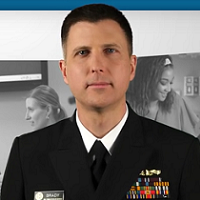 By Jeff Brady M.D., M.P.H.
By Jeff Brady M.D., M.P.H.
Twitter: @AHRQNews
The chances that you will receive safer care when you enter the hospital are increasing, according to a new report from AHRQ.
Between 2010 and 2014, we estimate that 87,000 fewer patients died from hospital-acquired conditions (HACs), such as adverse drug events, pressure ulcers, and potentially dangerous infections. In 2014 alone, 37,000 fewer patients died than would have died if the rate of adverse events had remained at the 2010 level. That is approximately equal to the number of women who die from breast cancer in the United States each year.
The incidence of these events overall has been reduced by 2.1 million, for an estimated savings of $19.8 billion. This hard-won progress is the result of concerted national attention by everyone from front-line staff in hospitals to policymakers in Washington.
If some of these findings sound familiar, it’s because they build on the data that AHRQ released last year that showed HAC rates declined by 17 percent between 2010 and 2013. Data at the 3-year mark showed that 50,000 lives and nearly $12 billion in health care costs were saved. In 2014, the interim data indicate that the overall HAC rate stayed at the 2013 level, sustaining the overall gains and increasing the overall impact of the effort over 4 years (2011–2014).
The latest findings confirm an encouraging trend: Patients in America’s hospital are safer today than they were in 2010. Of course, providing safer patient care is a goal shared by all of us who care for, and care about, patients. But the hard work of reducing and sustaining declines in HACs required ongoing involvement from the public and private sector, including Medicare payment incentives, hospital-based electronic health records, education and outreach, and evidence-based tools to implement best practices.
For example, the Affordable Care Act included Medicare payment incentives specifically designed to improve the quality of care. Following passage of the Affordable Care Act, HHS created the Partnership for Patients, a public-private initiative focused on making care safer, more reliable, and more affordable. At the outset of this partnership initiative, AHRQ helped coordinate the development and use of a national measurement strategy, which is the baseline for this report, Saving Lives and Saving Money: Hospital-Acquired Conditions Update.
In addition to the measurement strategy, AHRQ has established the evidence base and created many of the tools and resources that hospitals and other providers use to prevent HACs.
Just last month, we released the Toolkit for Reducing CAUTI in Hospitals based on the experiences of more than 1,200 hospitals nationwide that participated in an AHRQ-funded project to apply the Comprehensive Unit-based Safety Program to reducing catheter-associated urinary tract infections (CAUTIs). Preliminary data indicate that hospitals using these tools reduced CAUTIs by approximately 15 percent overall. AHRQ continues to work with our HHS colleagues and researchers across the country to create new knowledge about how to improve care, particularly in understudied areas such as diagnostic errors and antibiotic resistance.
Not only has the national reduction in HACs saved lives and saved money, it has helped policymakers and health providers recognize the magnitude of what can be achieved. Providers have learned what they need to do to prevent patient harm, while HHS and its partner agencies have identified how best practices can most effectively be put into widespread practice.
Certainly, there is more work to be done. The report we just released shows that there were 121 adverse events in 2014 for every 1,000 hospitalizations, a rate that is still too high. And following big declines in that rate in 2012 and 2013, the rate plateaued from 2013 to 2014, emphasizing the need for redoubling our collective efforts.
But this report shows that we’re moving in the right direction. At AHRQ we’re proud to facilitate this effort through measurement, evidence generation, and tool development. We are eager to continue working with our colleagues within HHS and with hospitals across the country to ensure that these resources are put to use on the front lines of care.
About the Author: Jeff Brady, M.D., M.P.H., is Director of AHRQ’s Center for Quality Improvement and Patient Safety. This article was originally published on AHRQ Views Blog and is republished here with permission.
